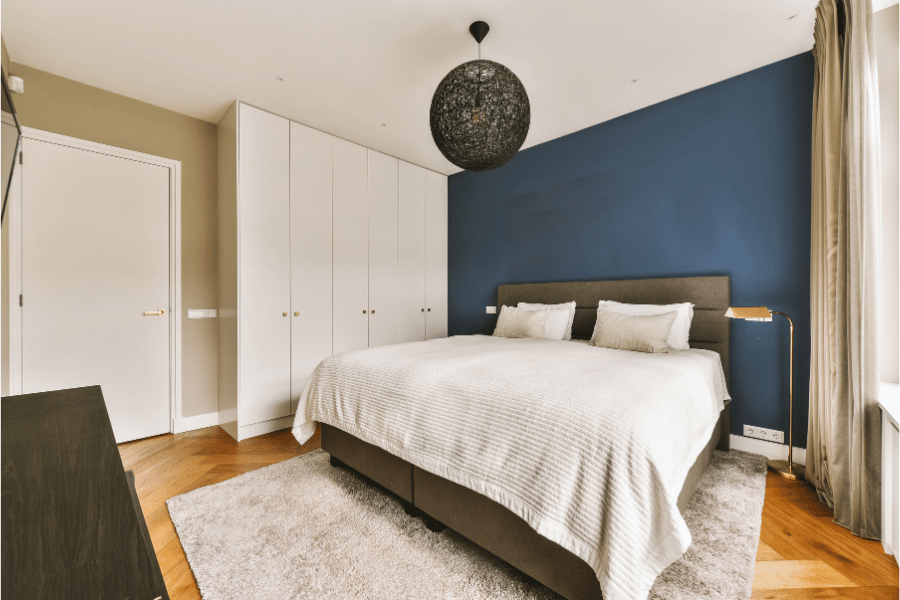Creating an accent wall can transform a room from ordinary to extraordinary with just a bit of paint and creativity. Whether you’re refreshing your living space or giving a room a complete makeover, the strategic use of an accent wall can add depth, character, and a personal touch to your home.

Let’s explore how you can choose and paint an accent wall for maximum impact, turning your space into a captivating canvas that reflects your unique style.
Choosing the Perfect Wall
The first step in creating an accent wall is selecting the right wall. Look for a wall that naturally draws the eye when you enter the room. It could be the wall behind your bed in a bedroom, behind the couch in the living room, or the one facing you as you enter a dining area.
Consider the room’s layout and choose a wall that enhances the space without overwhelming it. Walls with no windows or doors are ideal, as they offer a clean canvas for your creative expression.
Selecting Your Color Palette
Color is a powerful tool that can influence mood and perception. When selecting a color for your accent wall, consider the existing palette of your room. You want a color that complements, yet stands out from the rest of the walls. Don’t shy away from bold choices; deep blues, vibrant greens, or even daring blacks can add a dramatic effect.
If you’re unsure about a color, paint a large swatch on the wall and observe it at different times of the day, as lighting can significantly impact the color’s appearance.
Incorporating Texture and Patterns
For those looking to add an extra layer of sophistication, consider using textured paint or incorporating a pattern. Textured paints can give your wall a dimension that flat paint cannot, offering a tactile experience that enriches the room’s aesthetic.
Alternatively, stencils or painter’s tape can be used to create geometric patterns, stripes, or even a mural. These elements can turn a simple accent wall into a striking feature that captivates and delights.
Preparation and Painting
A successful painting project is all in the preparation. Start by moving furniture away from the wall and covering the floor with drop cloths. Use painter’s tape to protect trim, ceiling edges, and adjacent walls. Apply a primer if you’re making a drastic color change, ensuring the true color of the paint shines through.
When painting, use a roller for the majority of the wall, utilizing a brush for edges and corners where precision is key. Depending on the color and original wall color, you may need multiple coats. Allow ample drying time between coats, and once dry, carefully remove the painter’s tape.
Accessorizing Your Accent Wall
The final step in creating an impactful accent wall is accessorizing. The right decor can enhance the wall’s color and texture, bringing the room together. Consider hanging art that complements the wall color, using frames that contrast with the paint for added pop. Shelves, mirrors, or even a collection of your favorite photos can add a personal touch that makes the space uniquely yours.
Creating an accent wall is more than just a home improvement project; it’s an opportunity to express your personality and style. With the right preparation, color, and accessories, your accent wall can transform a room into a dynamic and inviting space that tells a story.
Remember, the most important aspect of creating an accent wall is to have fun and let your creative spirit shine through. After all, your home is your canvas, and you are the artist.

Leave a Reply